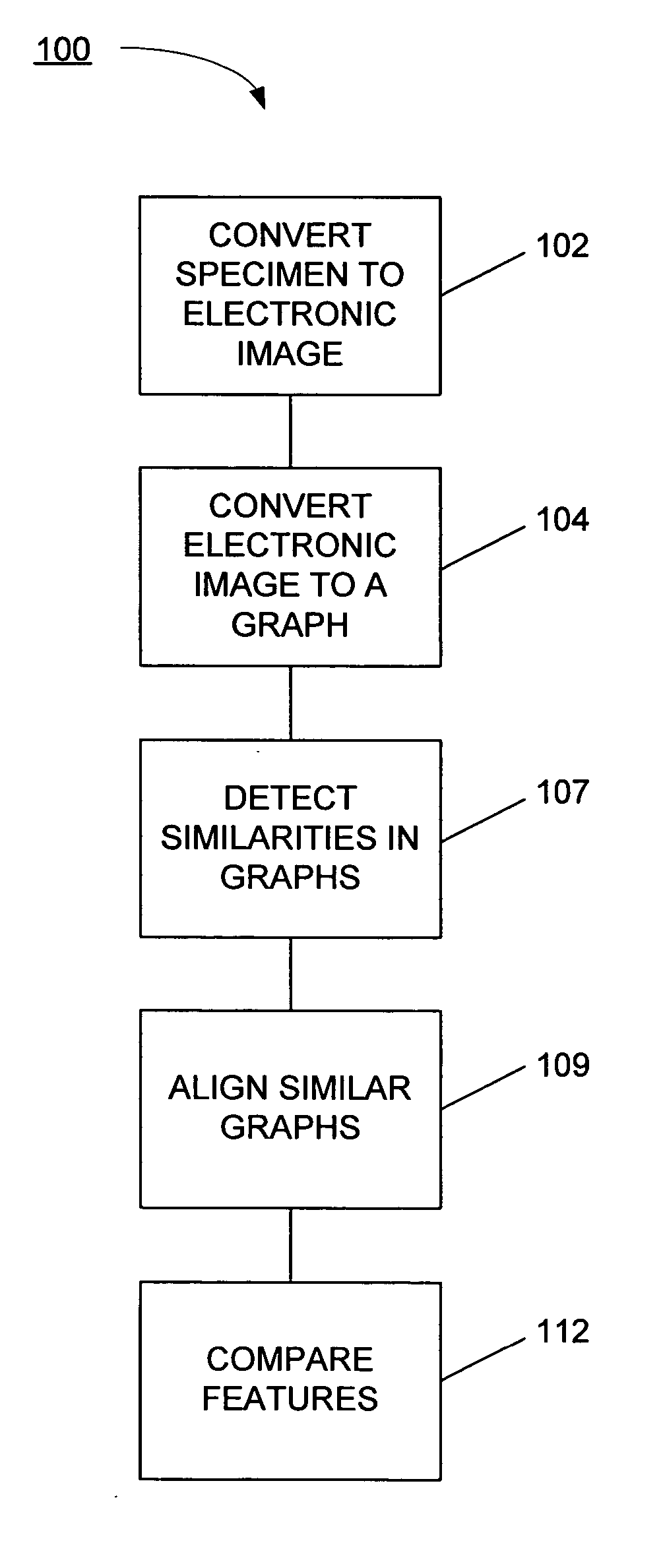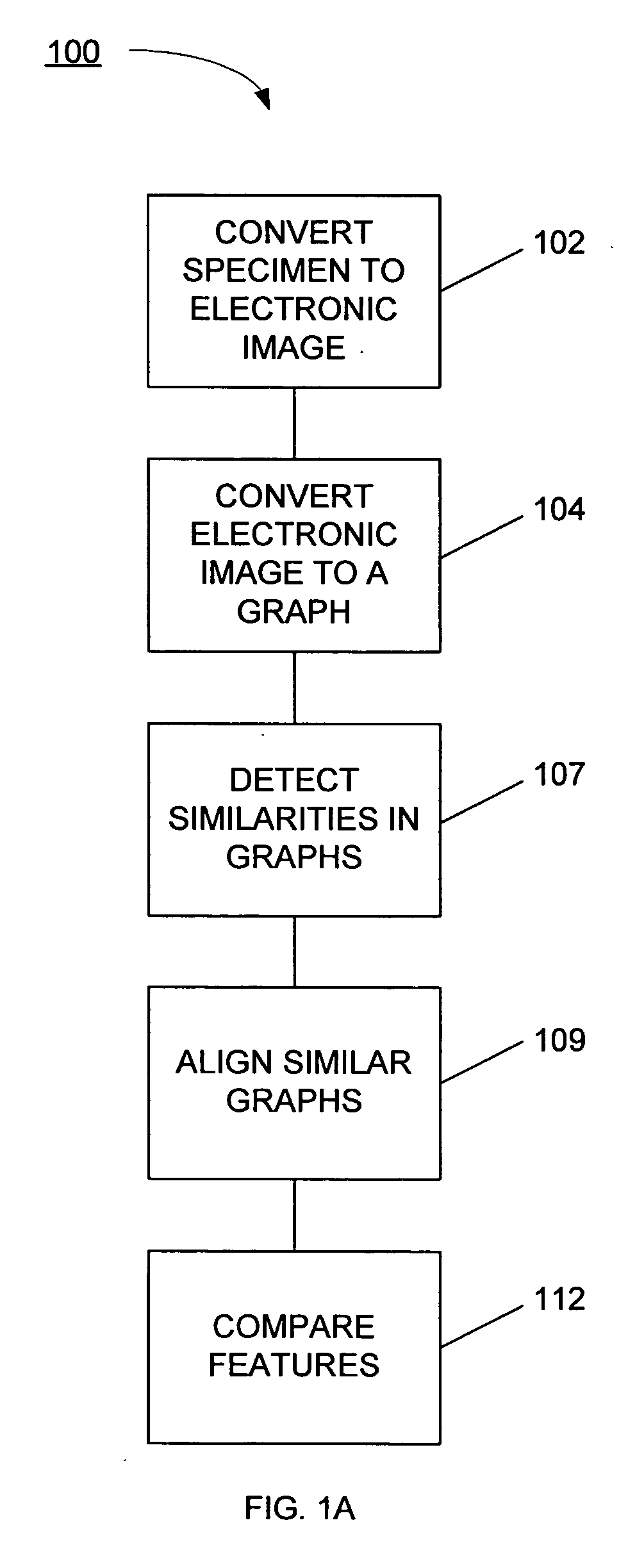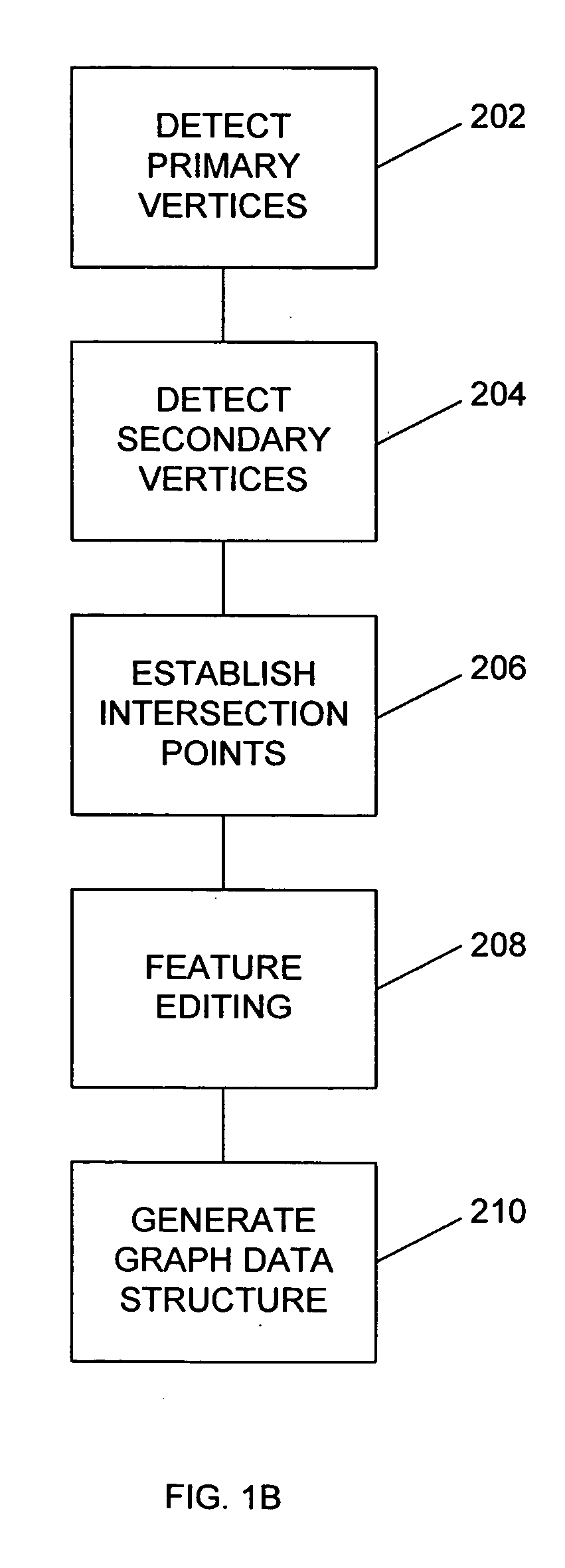Systems and methods for biometric identification using handwriting recognition
a biometric identification and handwriting technology, applied in the field of methods of identification, can solve the problems of check fraud and counterfeiting, among the fastest-growing problems affecting the nation's financial system, and the loss of $10 billion, and the loss of check fraud will grow by 2.5% annually
- Summary
- Abstract
- Description
- Claims
- Application Information
AI Technical Summary
Benefits of technology
Problems solved by technology
Method used
Image
Examples
Embodiment Construction
.”
BRIEF DESCRIPTION OF THE DRAWINGS
[0011] Preferred embodiments of the present inventions taught herein, are illustrated by way of example, and not by way of limitation, in the figures of the accompanying drawings, in which:
[0012]FIG. 1A is a flow diagram illustrating a method of biometric handwriting recognition in accordance with one embodiment;
[0013]FIG. 1B is a diagram illustrating a more detailed implementation of the graph generation step of FIG. 1B;
[0014]FIG. 2 is a diagram illustrating an electronic image of a character that can be converted into a graph in accordance with the methods of FIG. 1A and 1B;
[0015]FIG. 3A is a diagram illustrating a cross intersection vertex that can be included in an electronic image of a character, such as the character of FIG. 2;
[0016]FIG. 3B is a diagram illustrating a T-intersection vertex that can be included in an electronic image of a character, such as the character of FIG. 2;
[0017]FIG. 3C is a diagram illustrating a termination ve...
PUM
 Login to View More
Login to View More Abstract
Description
Claims
Application Information
 Login to View More
Login to View More - R&D
- Intellectual Property
- Life Sciences
- Materials
- Tech Scout
- Unparalleled Data Quality
- Higher Quality Content
- 60% Fewer Hallucinations
Browse by: Latest US Patents, China's latest patents, Technical Efficacy Thesaurus, Application Domain, Technology Topic, Popular Technical Reports.
© 2025 PatSnap. All rights reserved.Legal|Privacy policy|Modern Slavery Act Transparency Statement|Sitemap|About US| Contact US: help@patsnap.com



